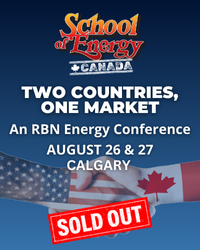After 19 years of natural gas production from the waters off the Canadian Maritime provinces, ExxonMobil, operator of the Sable Offshore Energy Project (SOEP), shut down production there, effective January 1, 2019. The closure further limits gas supply options for the already supply-constrained Maritimes and New England regions. Will the shutdown put even more stress on the already overtaxed gas pipeline system in New England? And will it spur increased flows of Western Canadian gas into northern New England and Canada’s Maritime provinces? Today, we continue our series examining the potential impacts of SOEP’s demise on New England gas markets.
In Part 1 of this series, we reviewed the shutdown of SOEP on New Year’s Day 2019. Originally intended as a stepping stone to a much larger offshore gas supply presence, SOEP and its little brother, Deep Panuke, eventually went into terminal decline, and with no further commercial discoveries of natural gas reserves in the region, water encroachment, economics and declines sealed their fates.
Although SOEP was producing just 60 MMcf/d of natural gas in its final month of production (December 2018), the end of this supply has two major implications. The first is that the provinces of Nova Scotia and New Brunswick, which were already fairly isolated in terms of gas supply, now only have two remaining supply options: piped imports from the U.S. via the Maritimes & Northeast Pipeline (MNP; green line in Figure 1) and LNG imports from the Repsol-operated Canaport LNG import terminal in New Brunswick (light-blue diamond). The second implication is that New England, which itself lacks sufficient pipeline connectivity, will increasingly be competing with Eastern Canada for supply, particularly in the winter months, when demand is highest.
New England already had been sending some gas north across the border in recent years. As we discussed last time, the end of SOEP production has resulted in even more gas making its way northward on MNP into the Maritimes, creating another squeeze on gas supplies for an already pipeline-constrained New England market. Before we get to that though, it’s worth reviewing the gas infrastructure that supplies the two regions, as shown in the Figure 1 map.
Join Backstage Pass to Read Full Article







